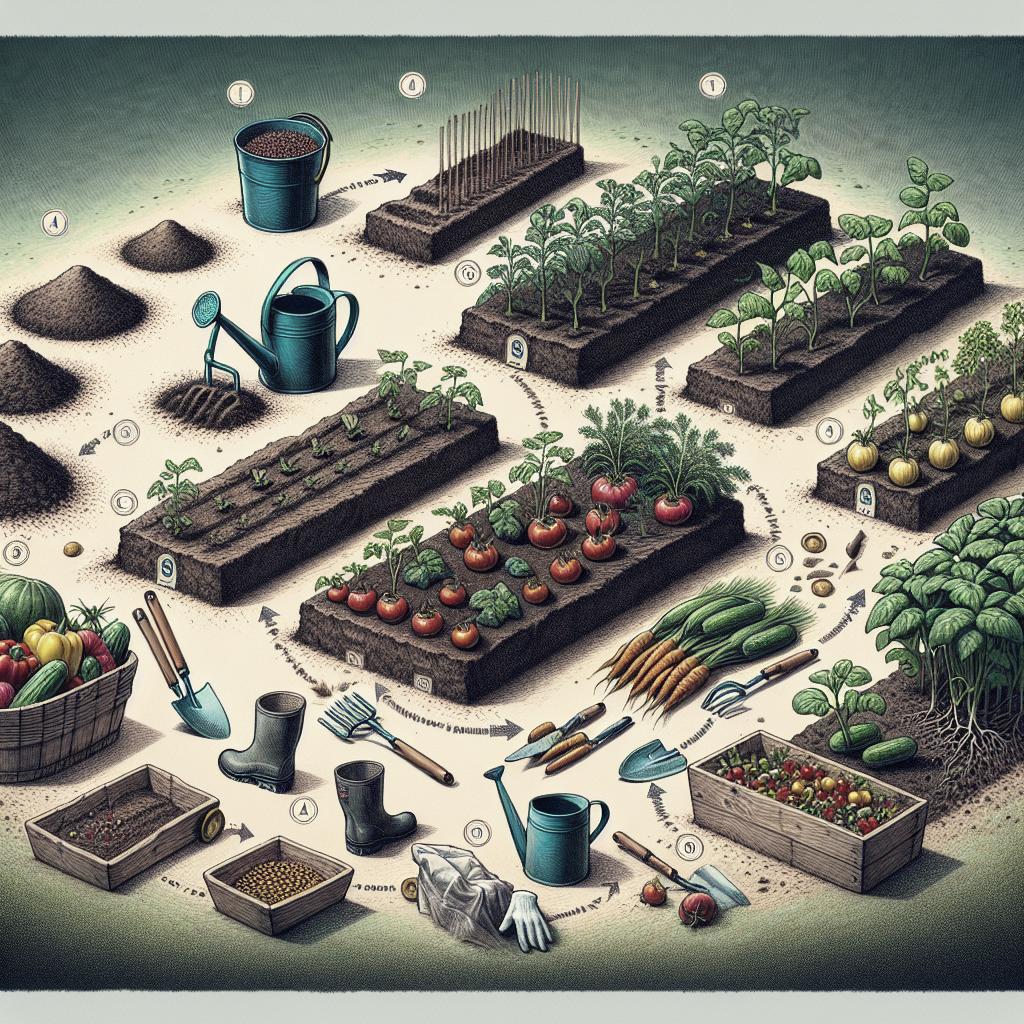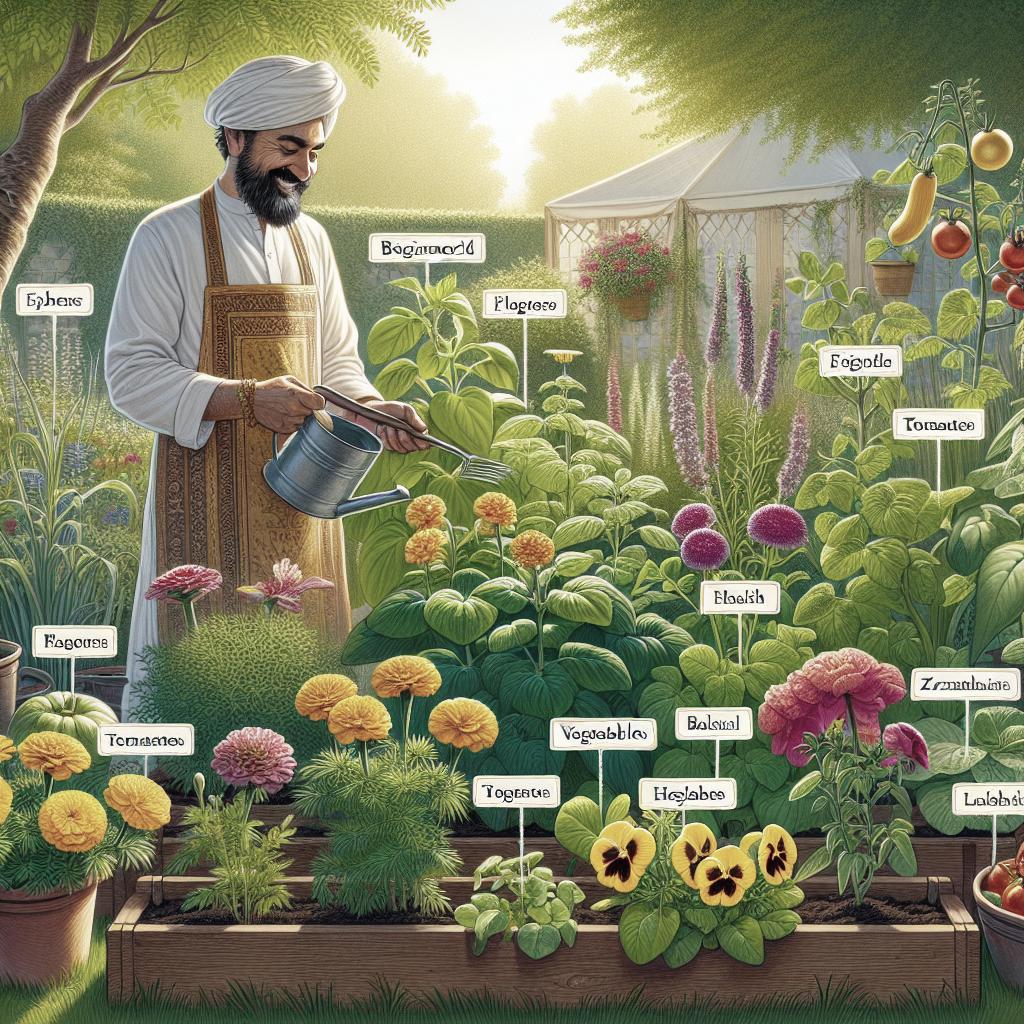“`html
How to Create a Sensory Garden
Creating a sensory garden is a rewarding project that brings together diverse elements of nature to stimulate the senses. This guide will explore what sensory gardens are, how to create them, and the best plants to use. Sensory gardens are designed to engage all five senses, offering therapeutic and educational benefits. We will walk through the steps of planning and cultivating a sensory garden, highlighting the important plants that make these gardens so enriching. Finally, we’ll provide resources to help you keep improving your gardening skills.
What are Sensory Gardens?
Sensory gardens are thoughtfully designed outdoor spaces that engage all five senses – sight, sound, smell, touch, and taste. These gardens are crafted to foster a deeper connection with nature, promoting relaxation, concentration, and mindfulness. While they benefit everyone, sensory gardens are particularly valuable in therapeutic settings, such as schools and care homes, providing a restorative experience.
Each element of a sensory garden is selected to offer specific sensory experiences. For example, water features can create calming sounds, while vibrant flowers add visual beauty. The goal is to orchestrate a holistic experience that can be both rejuvenating and educational, allowing visitors to discover nature through various sensory lenses.
How to Create a Sensory Garden
To start your sensory garden, first consider the space available, climate, and the preferences of those who will use the garden. A layout that allows easy navigation, such as winding paths or raised beds, can make the garden accessible and enjoyable for everyone. It’s essential to include seating areas to encourage visitors to pause and absorb the sensory experiences.
Building layers and textures into the garden adds depth and intrigue. Use a mix of plant heights, from tall grasses to trailing vines, and incorporate features like pebbled walkways or wooden trellises. Adding interactive elements, like a water feature or wind chimes, enhances the sensory richness of the space.
Plants for Sensory Gardens
Choosing the right plants is key to creating a diverse sensory experience. For visual appeal, consider bright flowers like sunflowers and marigolds, along with foliage in varying shades. Sounds can be incorporated with plants like bamboo or grasses that rustle in the wind.
Aromatic plants, such as lavender and rosemary, provide delightful scents, while herbs like mint and basil can also offer a taste experience. For touch, look for plants with interesting textures, like lamb’s ear (Stachys byzantina) or the soft leaves of sage. The combination of these plants not only stimulates the senses but also supports local biodiversity.
Gardening tips, videos, info and more delivered right to your inbox!
To enhance your sensory garden experience or to get started on your gardening journey, consider subscribing to newsletters from gardening experts. These resources often include tips on plant care, design ideas, and seasonal gardening advice that can inspire and inform your own projects.
There are countless online communities and platforms where you can connect with fellow gardening enthusiasts. Sharing experiences and learning from others can provide new insights into creating a successful sensory garden. Additionally, video tutorials are a practical resource for visual learners seeking step-by-step guidance.
Future Prospects
Embarking on the creation of a sensory garden opens the door to a world of natural exploration and relaxation. By engaging all five senses, these gardens offer a powerful connection to nature, enriching lives through their therapeutic properties. As you continue to develop your garden, the possibilities for creativity and learning are endless.
| Section | Summary |
|---|---|
| What are Sensory Gardens? | Introduces sensory gardens, highlighting their design to engage the five senses for therapeutic and educational benefits. |
| How to Create a Sensory Garden | Explores space considerations, layout planning, and interactive elements for building a sensory garden. |
| Plants for Sensory Gardens | Discusses the ideal plants for each sense, from visual and aromatic to tactile varieties, enhancing the sensory experience. |
| Gardening Tips and Resources | Offers resources for gardening advice, including newsletters and online community engagement for ongoing learning. |
“`


